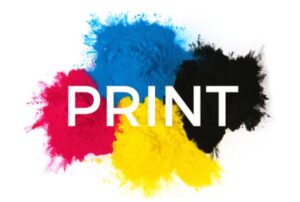Print Strategies

While digital has proved to be the great leveler when it comes to publishing, print requires a greater investment of time and money, but it’s these very characteristics that mean printed content can be a highly effective marketing tool. Here’s why:
- It gets noticed – In a world of digital noise, receiving a piece of printed collateral captures our attention. It’s such a rare occurrence these days that it has a novelty factor. Careful selection of the right materials and printing techniques can also add sensory appeal that words on a screen can’t compete with.
- It’s trusted – As fake news becomes an endemic issue, print harks back to a more reliable era. Survey after survey has shown that consumers trust print more than any digital equivalent. Edelmen Vice President James Turner attributes this to the fact that companies go to great lengths to avoid expensive mistakes ending up in print, which leads to comprehensive fact checking – something that is often overlooked or deemed unnecessary when producing online content that can be easily edited.
- It’s more appealing to influencers – Tell someone that their thoughts or opinions will be included in a digital article and they may well be flattered. Tell them that the same views will appear in print and they are more likely to be genuinely excited. Back when I worked in PR, clients were always more interested in being featured in print titles, and it seems that not much has changed in the intervening years. Founder of the CMI Joe Pulizzi agrees: “I talked to a journalist recently who said it’s harder and harder to get people to agree to an interview for an online story,” he says. “Mention that it will be a printed feature and executives rearrange their schedule.”
- It’s more effective as a learning tool – A study conducted in Norway a few years ago tested comprehension after reading information in print and on a computer screen. The students who viewed the printed documents scored significantly higher in terms of remembering what they had read, which the researchers put down to the fact that paper provides ‘spatio-temporal markers’. In laymen’s terms, this means that the act of touching paper and turning pages makes it easier to remember where you read something.
- It can be more detailed – Further research shows that it is harder to read on screen, with people taking in information 20-30% slower than if they were reading a printed document. As such, the advice is to reduce the length of text displayed online by at least 25% in comparison to print. This means that if you have complex or detailed material to share, you might be wise to do so in print rather than a digital format.
- It provides a screen break – There is evidence to suggest that looking at screens for too long can disrupt sleep and lead to a condition called computer vision syndrome. As we become more aware of issues caused by excessive screen use, increasing numbers of people are looking for opportunities to switch off and tune out, even for a little while. Where once we may have shunned print as old fashioned, many of us now relish the opportunity to consume information in a non-digital format.
- Print is going programmatic – if you’ve been wooed by the wonders of programmatic advertising then you will be heartened to hear that forward-thinking companies like Time Inc recognize the brand uplift opportunity offered by print by introducing combined digital/print programmatic ad bundles.
What all this tells us is that we shouldn’t throw the proverbial baby out with the bath water. Yes, digital technology provides exciting opportunities when it comes to marketing, but it shouldn’t automatically replace everything that came before. Make 2017 the year you reintroduce print into your content marketing and see the results for yourself.
ARTICLE BY Tor Goldfield

206-391-5682
i2i@i2idirectmarketing.com
www.i2idirectmarketing.com
“…all deliveries GPS tracked…”




